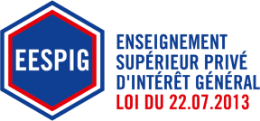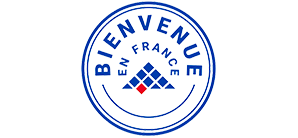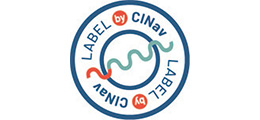Spatial Engineer
The French and European space programs are economically and strategically important for the future: the development of access to space, with applications such as Earth observation or telecommunications, activities related to research in a zero-gravity environment, the presence of man in space, the continuation of development of the large families of satellites such as Spot, development of mini and micro-satellites, preparation of various interplanetary probes and the missions to Mars, all of these are subjects that are currently being developed. Becoming an engineer in the space sector means working on the construction of launchers, spacecraft (satellites, probes, shuttles, orbital stations) and thrusters, and also taking part in the launch and operation of satellites.
Specialised training and privileged contact with companies
more than 400 hours of courses are provided by engineers from CNES, EADS, ONERA, ArianeSpace, the SAFRAN Group, etc.
at least 4 implementation projects are performed during the curriculum, for example:
- launcher architecture design office;
- calculation of the performance of the force provided by different propellants;
- dimensioning satellites for particular missions; programme for launch into orbit
12 months of work-experience courses obligatory:
- Discovering the company course in 1st year at EADS Astrium: management of documentation and nomenclature;
- Engineer’s work-experience course in 4th year” at CNES: research into the characteristics of Martian soil from information collected during a mission to Mars;
- End-of-studies work-experience course in 5th year at EADS Space Transportation (Astrium): research into new architectures for navigation systems for development of the control of launchers.
visits to sites and conferences: CNES at Toulouse, SAFRAN at Vernon (rocket engines), etc.
Main partners
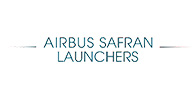
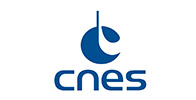
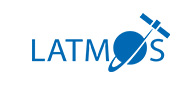
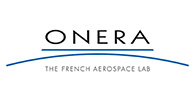
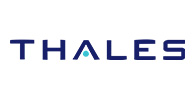
An association for expressing your interests
The rocket club: ESO (ESTACA Space Odyssey) designs, builds and launches experimental rockets, mini-rockets and stratospheric balloons with the logistical and methodological support of the “Planète Sciences” Association. These launches take place during campaigns performed at the initiative of the national centre for space studies (CNES).
- Sciences
- Human sciences and Engineering culture
- Transport Engineering
- Vocational Internship I (4 weeks)
- Sciences
- Human sciences and Engineering culture
- Transport Engineering
- Vocational Internship II (4 weeks)
- Sciences
- Human sciences and Engineering culture
- Transport Engineering
- Sciences
- Human sciences and Engineering culture
- Transport Engineering
- Trainee engineer Internship (4 month)
- Transport Engineering
- Engineer Internship (6 month)
Spatial Syllabus - 1st Year
- Scientific Training
- Training in the Human Sciences
- Initiation Guided Transport, Initiation Automobile, Initiation Aeronautics and Spatial
Vocational Internship I (4 weeks).
• Logic
• Calculus in R and C
• Plane and spatial geometry
• Functions with one variable
• Sequences
• Polynomials
• Linear algebra
• Differential equations and systems
• Frames of reference
• Coordinate systems
• Trajectories and equations of movement
• Particle mechanics
• Link mapping and analysis
• Technologies and operation of actuators
• CAO (SOLIDWORKS)
• Systems of units and uniformity of equations
• Order of magnitude and error calculations
• Introduction to organic chemistry
• Reaction mechanisms (electronic, energy and kinetic aspects), Alkanes, alkenes, alkynes and hydrocarbons.
Spatial Syllabus - 2nd Year
- Scientific Training
- Training in the Human Sciences
- Aeronautics and Spatial
Vocational Internship II (4 weeks).
• Functions with several variables
• Vectoral analysis
• Power series and Fourier series
• Laplace transform and Fourier transform
• Conics
• Real-valued random variables
• Discrete and continuous usual laws
• Central limit theorem and approximations
• Introduction to object oriented programming
• Project in C++ language
• Advanced Excel
• Traction / compression / torsion / bending
• Strain and stress
• Mechanical behaviour
• Beam analysis and dimensioning
• Physical and mechanical properties
• Different types of materials
• Crystallography
• Study of combustion characteristics
• Free enthalpy
• Redox
• Single, alkali and hydrogen fuel cells
• MSystems modeling (equations and transfer functions)
• Elementary command loop
• Systems frequency studies
• Matlab application
• Periodic signals
• Functional approach (amplifiers and filters)
• Frequency responses
• Functional aspects of converters
• Inverters, converters and continuous current machines
• Propagation and superposition phenomena
• Maxwell equations
• Applications to acoustic waves and electromagnetic waves in a vacuum
Spatial Syllabus - 3rd Year
- Scientific Training
- Engineering Culture
- Aeronautics and Spatial
• Isostatism of a mechanism, analysis, determination and functional incidences
• Theory of contact between solids
• Dimensioning of guidance, assembly and power transmissions
• Introduction to fatigue
• Introduction to various modes of heat transfer
• Conduction (heat equation, stationary and variable regimes)
• Convection
• Radiation
• Analysis of periodic signals
• Signal energy and power
• Analogue digital conversion
• Introduction to digital fi ltering
• Fluid dynamics
• Dimensional analysis and similarity
• Boundary layer (laminar and turbulent)
• Power electronics
• Electromechanical conversion (energy effi ciency)
• Structure and principle of electric machines (synchronous and asynchronous)
• Application to electrical motors and converters
• Logic functions
• Combinatory and sequential circuits
• Introduction to information transmission
• Linear systems
• Interpolation, approximation and integration
• Ordinary differential equations (explicit and implicit methods)
• Partial differential equations (finite differences)
• Model complexity analysis
• Parameter analysis and dimensioning
• Programming, validation and optimization
• Presentation of UML
• UML static and dynamic diagrams
• Development of an application
• Group dynamics
• Formalization of the professional project
• Introduction to project management
• Functional and technical needs analysis (specs)
• Operation condition
• Application to product-process design
• Application to an innovative project
• Review of energy resources in the world and in France
• Macro- and micro-economic analysis of the dependency on raw materials
• Application to the transport of tomorrow
• Structures and systems architecture
• Aircraft design methods
• Systems engineering method
• Reminders on properties of fluids
• Aerodynamics forces and moments
• Incompressible and compressible fl ow in subsonic, transonic, supersonic and hypersonic
• Application to flow calculations in pipes
• Shock theory
• Reminder of flight mechanics
• Flight equations
• Flight phase simulation
• Classification of aeronautical gas turbines
• Application to the thermodynamics of gas turbines
• Aerodynamics of compressors and turbines
Spatial Syllabus - 4th Year
- Scientifics training
- Engineering Culture
- Spatial
Trainee engineer Internship (4 month).
• Variational formulation and meshing
• Structure discretization
• The various families of finite elements in structure calculation
• Calculation of elementary matrices, assembly and calculation of the solution to a static problem
• General hypotheses of continuum mechanics
• Theory of elasticity, viscoelasticity and thermoelasticity
• Introduction to damage, rupture and fatigue
• Elastic problem solving methods
• Introduction to dynamic and acoustic phenomena
• Theoretical and experimental modal analysis
• Linear acoustics, acoustic modes and acoustic impedance
• Mass and energy balances in open systems
• Conversion of thermochemical energy into heat energy
• Conversion of thermochemical energy into mechanical – electrical energy
• Architecture design of hydraulic systems
• Modelling of head loss
• Power dimensioning
• Introduction to networks and components
• Coupling of mechanical, electrical, thermal and hydraulic models
• Multi-physical modeling tools
• Basic concepts of software architectures
• Task scheduling
• Synchronization and inter-task communication
• Control of discrete-time systems
• Introduction to sequential systems
• Real-time prototyping
• Inverse model
• Modelling control of asynchronous and synchronous machines
• Introduction to quality
• Process model and control graph
• Certification and customer relations
• Statistical inference (sampling and estimation)
• Statistical process control
• Experimentation
• Introduction to industrial company organization and environment
• Production planning (flows, stock management, needs calculation)
• Introduction to lean management
• Social behaviour in the company
• Managing international projects
• Structuring a project into tasks and phases
• Business plan
• Formalization of the professional project
• The network
• Launch vehicle missions and architecture
• Introduction to various types of propulsion
• System and stage interfaces
• Launch vehicle structures
• Space mechanics
• Aerodynamic coeffi cients of a wing profi le (incompressible, compressible subsonic, supersonic and hypersonic)
• Study of elongated bodies in supersonic and hypersonic flows
• Introduction
• Software simulation piloting
• Guidance and navigation
• Electrical systems
• Launcher steering
• Introduction to current and future launchers
• Management of a launcher system development program
• Trajectory and performance
• Calculation of loads and dimensioning
• Introduction to current and future launchers
• Ground installations and tracking devices
• Launcher Operating Reliability and safeguarding
• Management of a launcher program in production
Spatial Syllabus - 5th Year
- Specialisation – Spatial
Engineer Internship (6 month).
• General presentation Satellite / ATV / Space tourism
• Dimensioning of the satellite platform (Structure / Electricity / Propulsion)
• Dimensioning the satellite payload (various mission types)
• Automated Transfer Vehicle (Development and production)
• Entry vehicles (aerodynamic aspects, structures)





